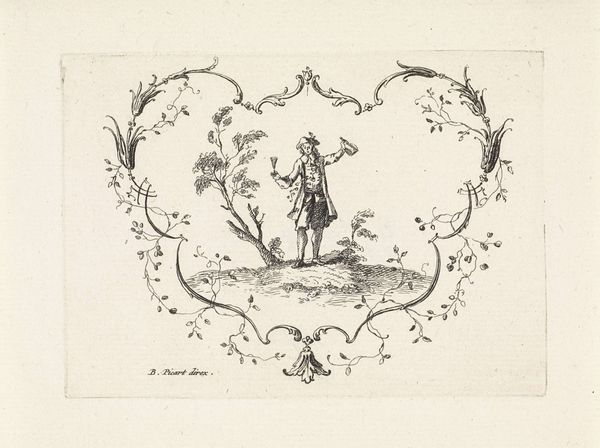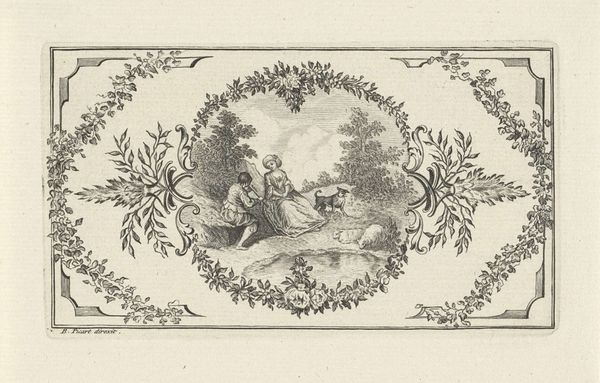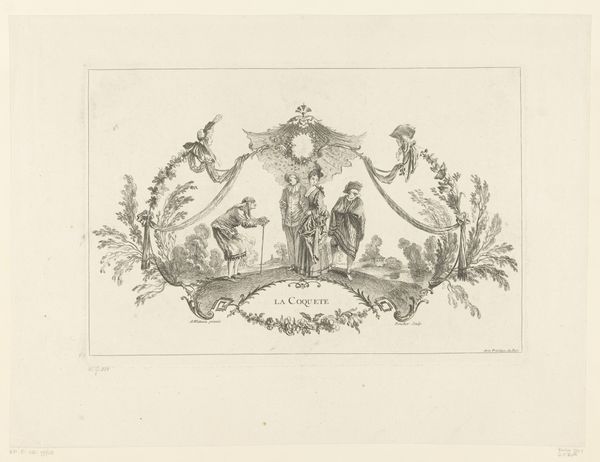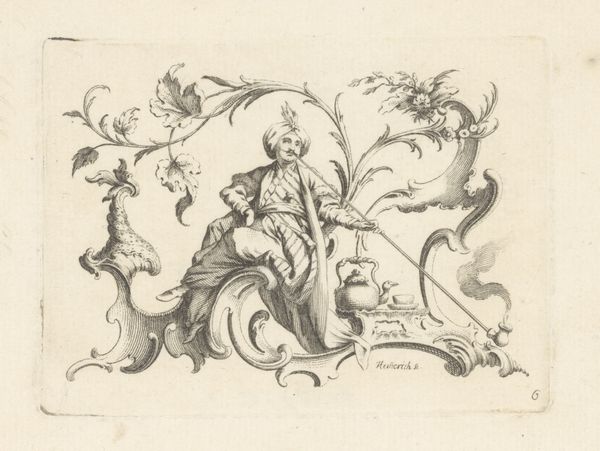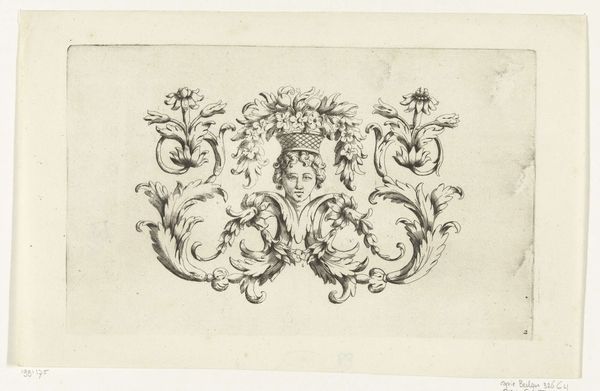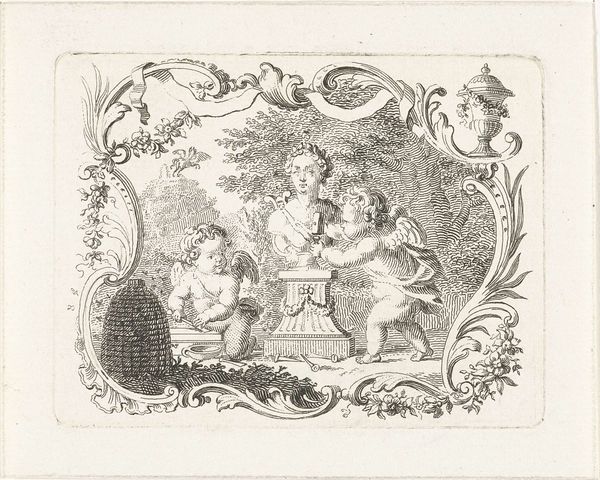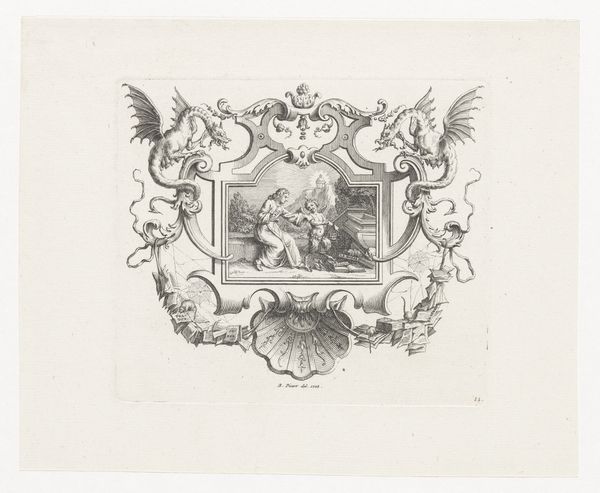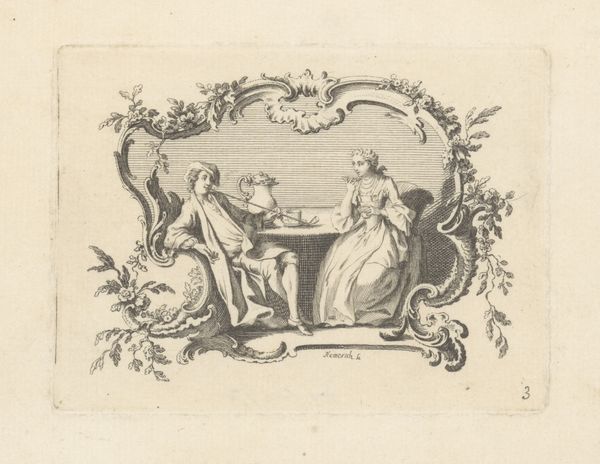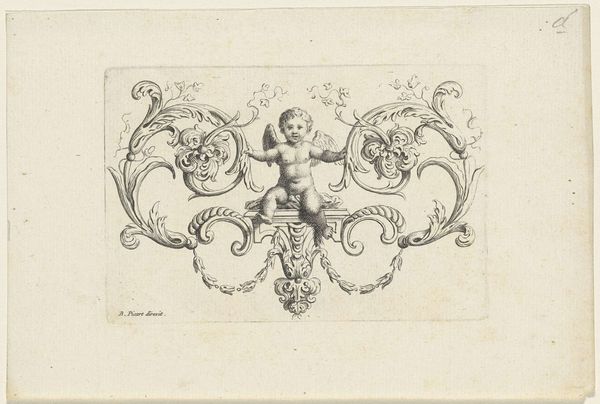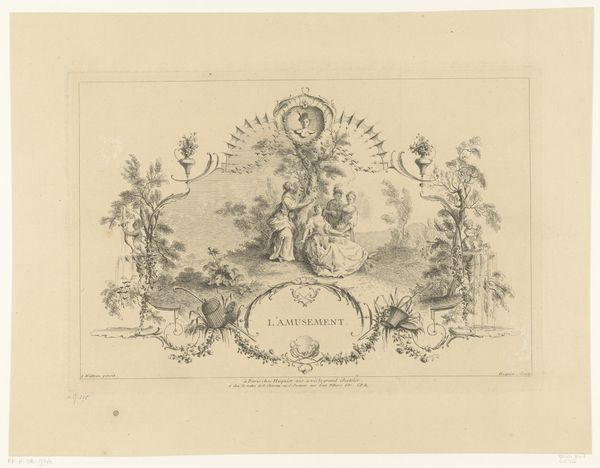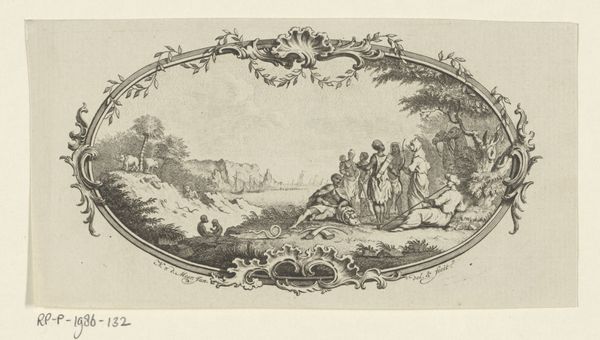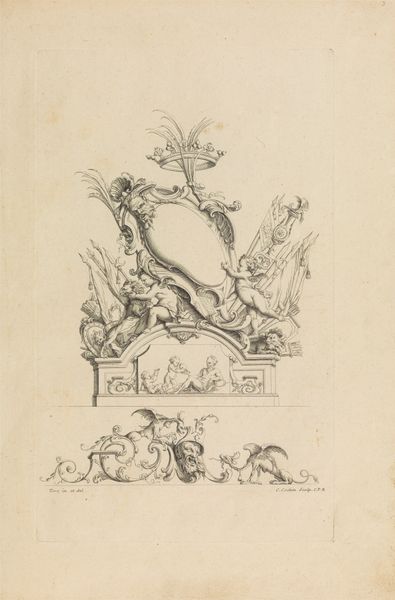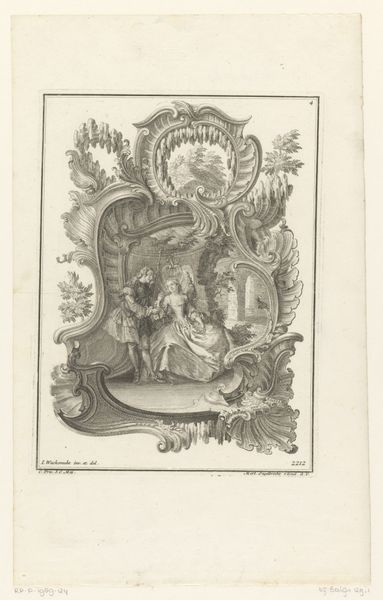
drawing, ink, engraving
#
drawing
#
baroque
#
pen illustration
#
landscape
#
figuration
#
ink
#
line
#
genre-painting
#
engraving
Dimensions: height 78 mm, width 111 mm
Copyright: Rijks Museum: Open Domain
Curator: This engraving, “Luitspeler,” or “Lute Player,” by Bernard Picart, dates sometime between 1683 and 1733. It’s currently held here at the Rijksmuseum. Editor: It's delicately rendered; there's almost a playful elegance to the scene. I find myself drawn to the intricate floral border—it frames the musician perfectly, but also almost isolates him. Curator: It’s typical of Picart's era to use ornamental borders in this way, almost like stage curtains around a performance. Consider how printed images like these circulated in the 18th century—often bound in books, adorning walls. How does this imagery reflect the rise of a leisure culture? Editor: Exactly. It reminds us that access to leisurely art like music was very unevenly distributed along gender, race, and class lines. We must question whose leisure time and pleasure is prioritized. That figure playing the lute—is it idyllic, or does it embody a system of privilege? Curator: I think it’s important to view Picart’s piece in conversation with the Dutch Republic’s booming publishing industry during the period. Prints and engravings were tools for disseminating ideas and social trends. Editor: Yes, and the fact that this is an engraving raises crucial questions about how narratives get disseminated. Who had access to reproducing these images? Whose stories got told, and how did the images, in turn, shape the lives of those depicted versus the viewing public? This image creates an accessible scene. But accessible for whom, exactly? Curator: I'd say Picart captured something of the spirit of the age. But looking closely at this image can also open our eyes to the social forces at play and even, to how those inequalities are sustained through visual culture today. Editor: Ultimately, viewing something like "Luitspeler" asks us to consider the politics of leisure and representation across time. It's beautiful, but beauty itself can sometimes obscure harder truths if we don’t probe deeper.
Comments
No comments
Be the first to comment and join the conversation on the ultimate creative platform.
